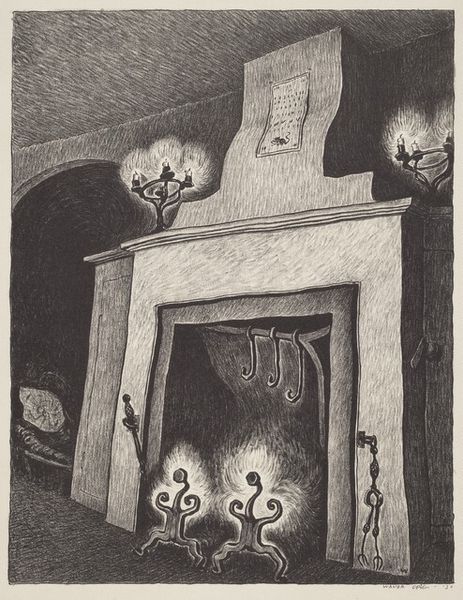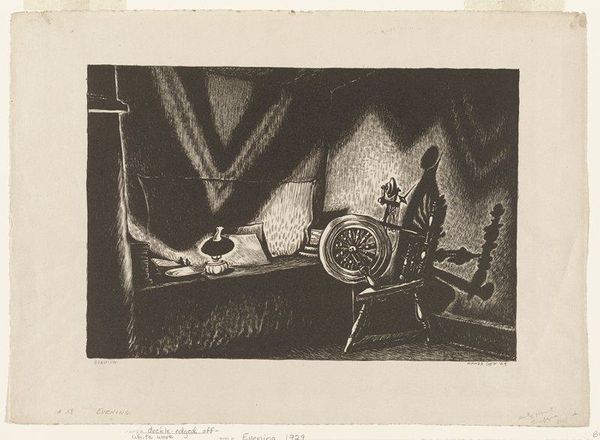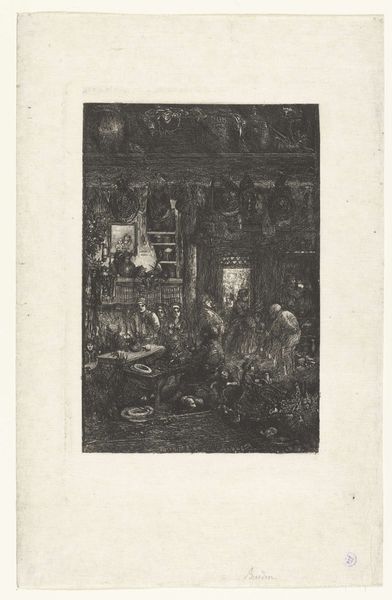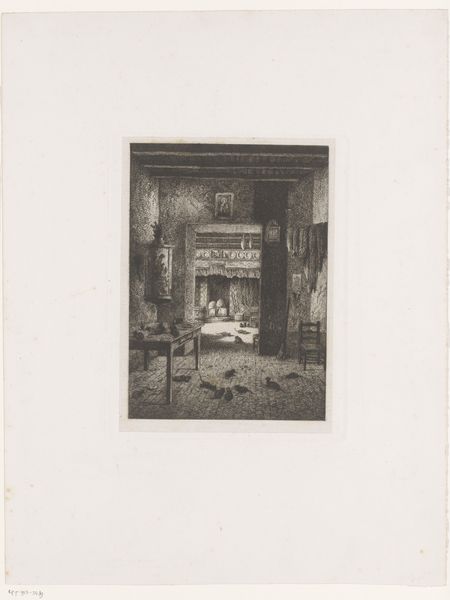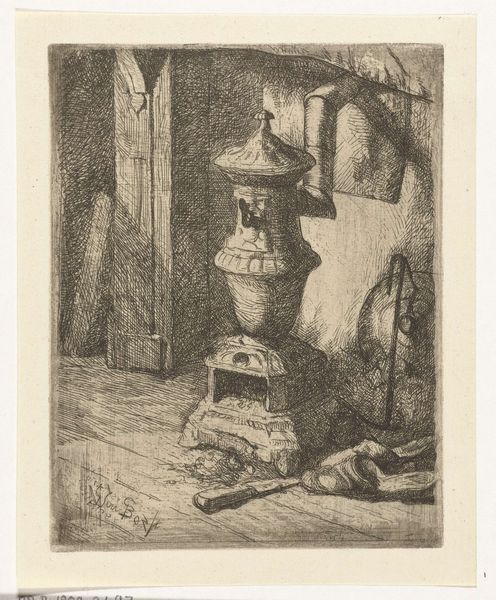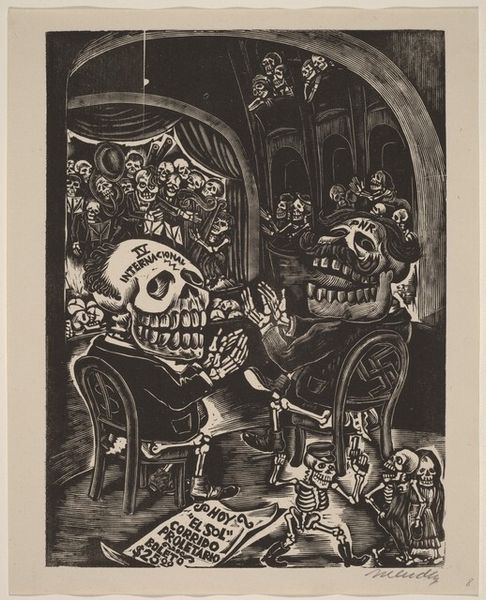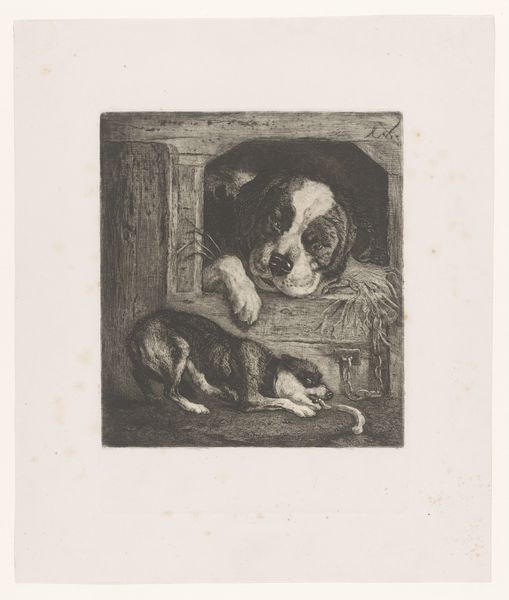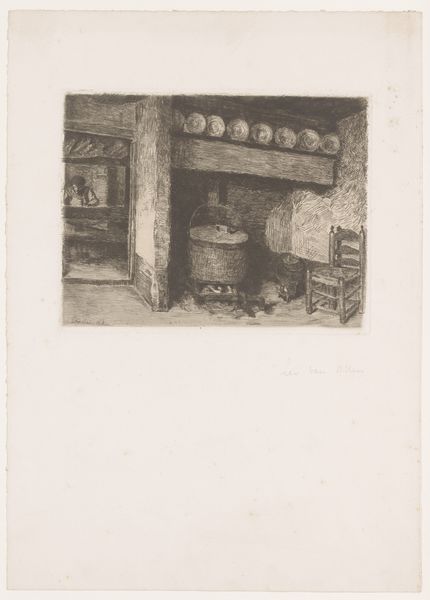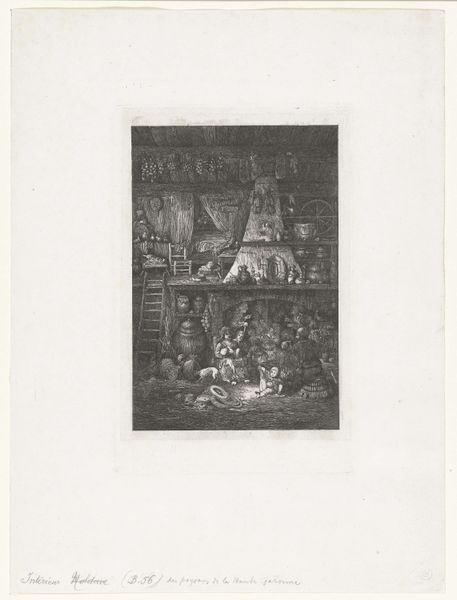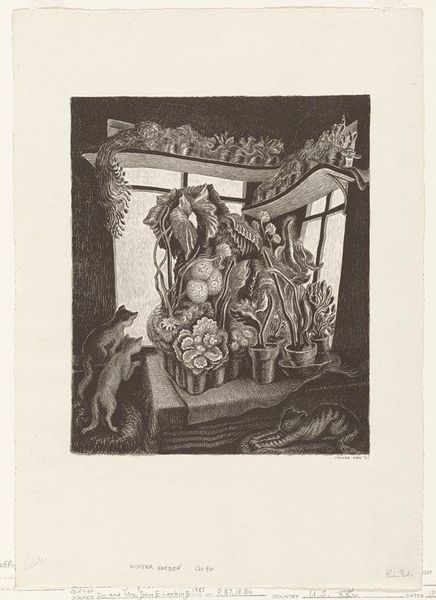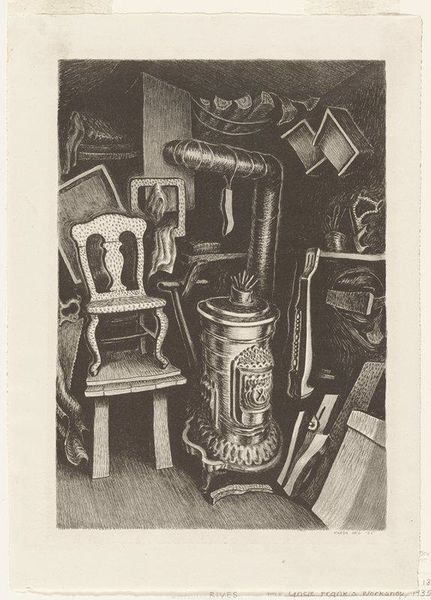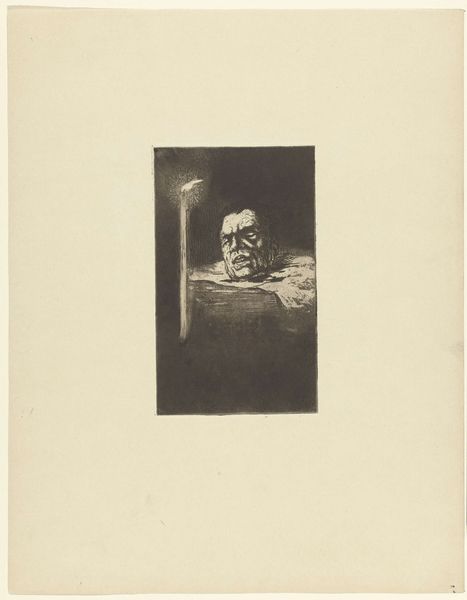
drawing, lithograph, print, graphite
#
art-deco
#
drawing
#
lithograph
# print
#
landscape
#
graphite
#
realism
Dimensions: 11 x 8 1/2 in. (27.94 x 21.59 cm) (image)
Copyright: No Copyright - United States
Curator: Looking at Wanda Gág's lithograph, "Fireplace (Cream Hill)," created in 1930 and held here at the Minneapolis Institute of Art, I immediately sense an almost otherworldly quality. Editor: It’s definitely intriguing. I'm struck by the stark contrasts. Gág uses lithography and graphite so well in creating the textures—the very tangible rough texture of the hearth stands out against the soft glow in the firebox. I am drawn into that play with light and shadow created through those very humble materials. Curator: I think it’s a perfect encapsulation of a moment in time, and in art history. The subject matter is mundane – a fireplace – yet Gág imbues it with such a unique presence. It highlights the space of domestic life, particularly the fireplace which represents warmth, safety, and community. The scene in a rural space like Cream Hill gives it layers to those feelings. Editor: And the rendering... Lithography allows her to bring attention to her technical skill. Notice how the varied strokes almost mimic the textures of rough-hewn wood, brick and so on. But how does this relate to a larger social context? To labor, to the means of production that this print has gone through? Curator: It’s fascinating that you focus on labor. You know Gág and other artists were trying to navigate an art world still defined by traditional gender roles. Lithography, especially in prints, was gaining importance precisely because it allowed more people to create art. The ability to circulate art was being democratized. Editor: Very much! She transforms everyday subjects like this fireplace into something that feels quite subversive. Is it commenting on the economic hardships of the time, focusing our attention to basic material conditions like heating a house? Or is it really more like art nouveau and that movement’s investment into functional design and objects? Curator: It seems to speak to all those issues at once, and it is hard to imagine that someone at the time looking at the image would miss at least one of those things. She is reflecting modernism while drawing on deep historical knowledge of artmaking and the labor needed to survive. Editor: Exactly. Seeing art, making art, like this makes us conscious of how it lives as labor—a point which transcends through social categories. Curator: Thanks for offering such a refreshing materialist perspective on this compelling piece!
Comments
minneapolisinstituteofart over 1 year ago
⋮
This fireplace was at the Connecticut country home of New York newspaperman Lewis Gannett (1891–1966). Wanda Gág had time to draw it in 1930 when Gannett lent her his house for the summer. Five different Gág siblings paid long visits, making this hearth— with its connotations of comfort and family—an especially potent subject. The knobby ironwork points to the folk-like quality in much of Gág’s work. It can be traced to her German-Bohemian childhood in New Ulm, Minnesota, which was filled with fairytales, folk legends, and old-world craftsmanship
Join the conversation
Join millions of artists and users on Artera today and experience the ultimate creative platform.
